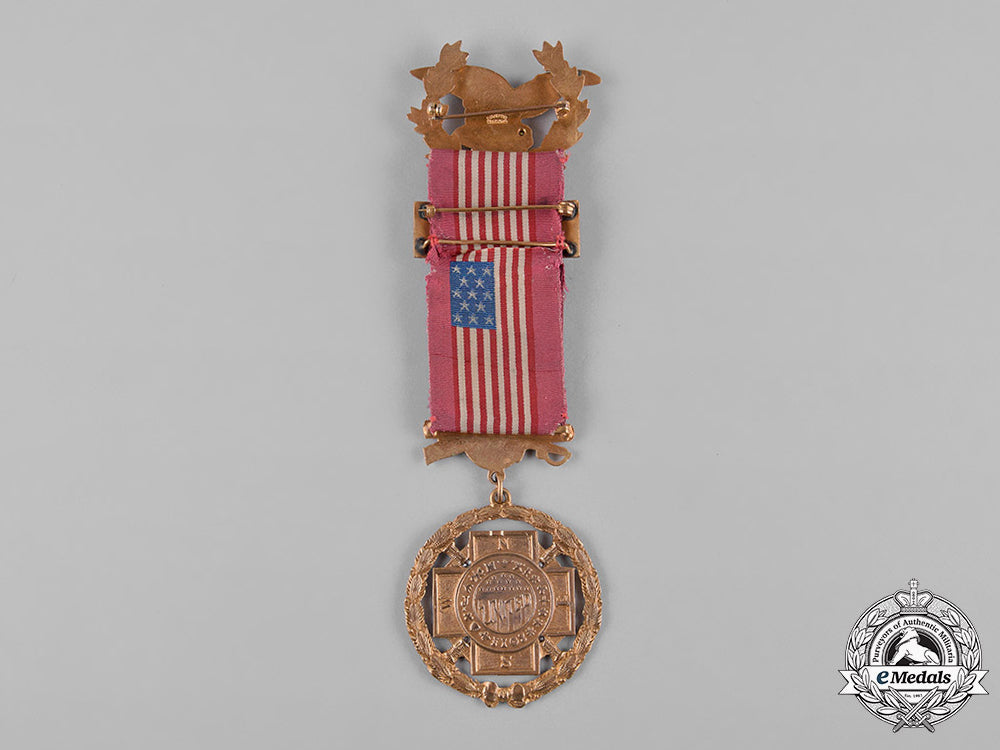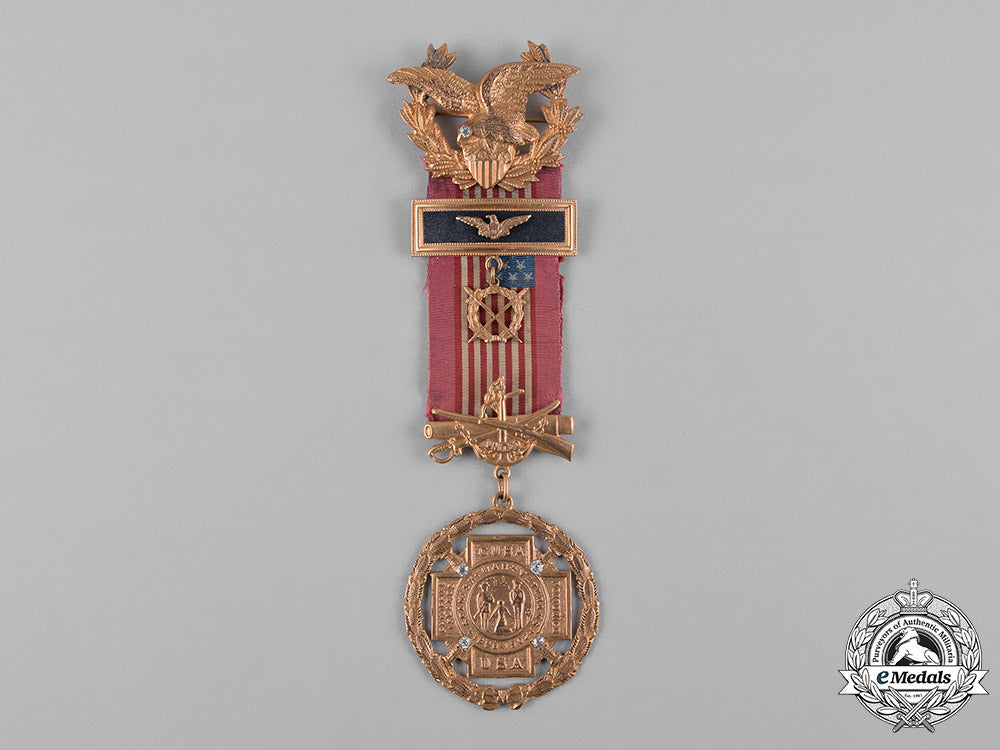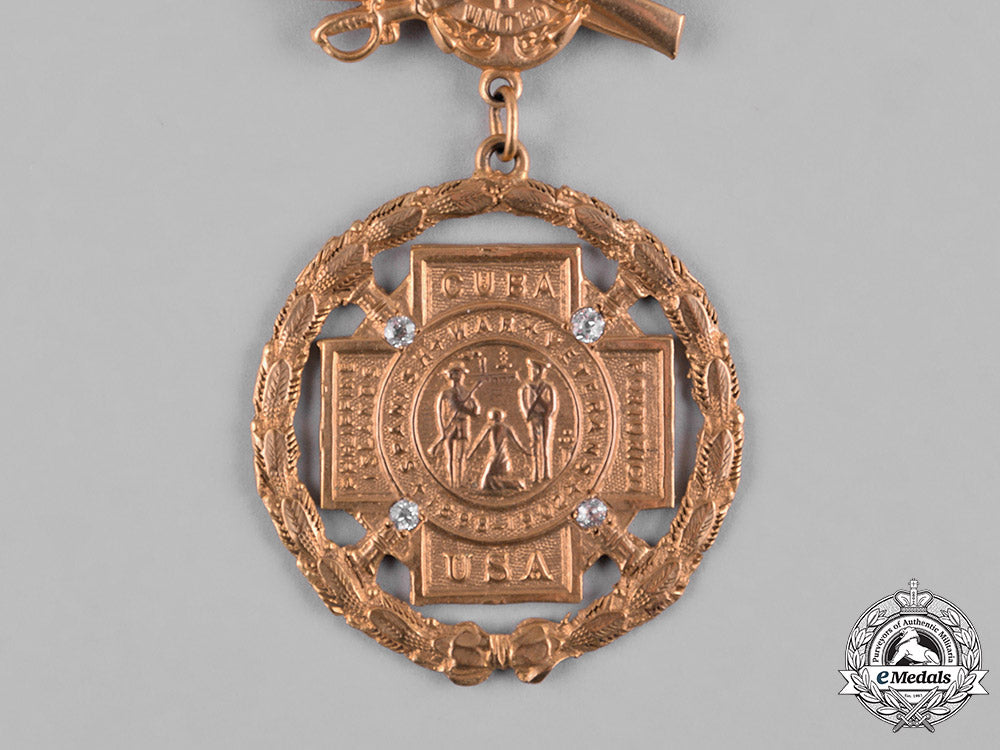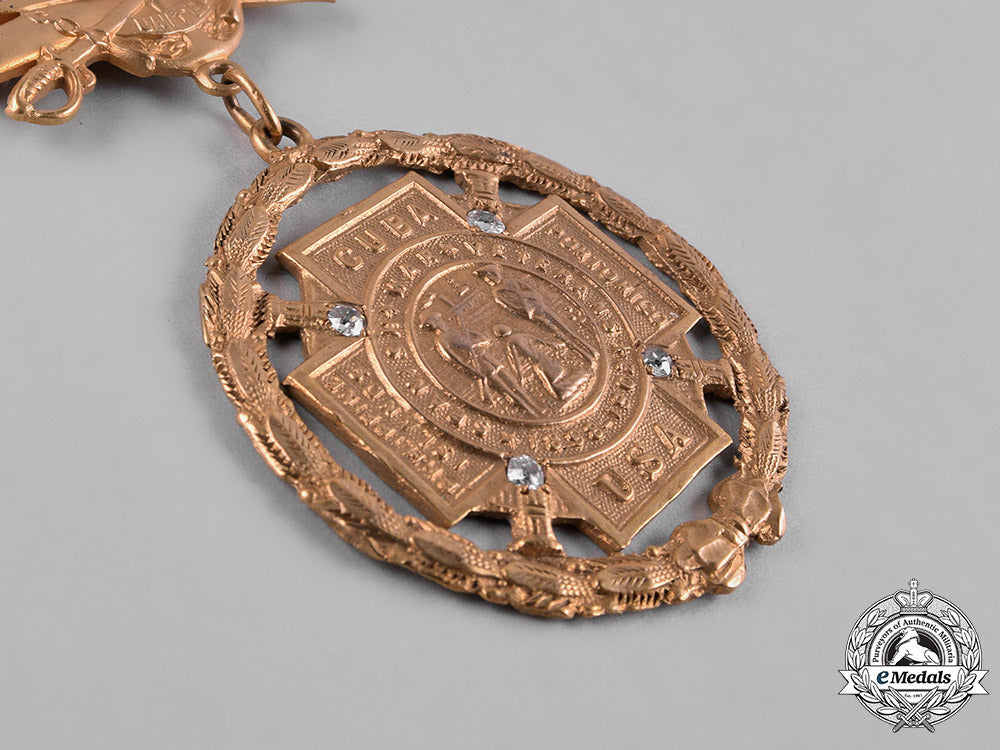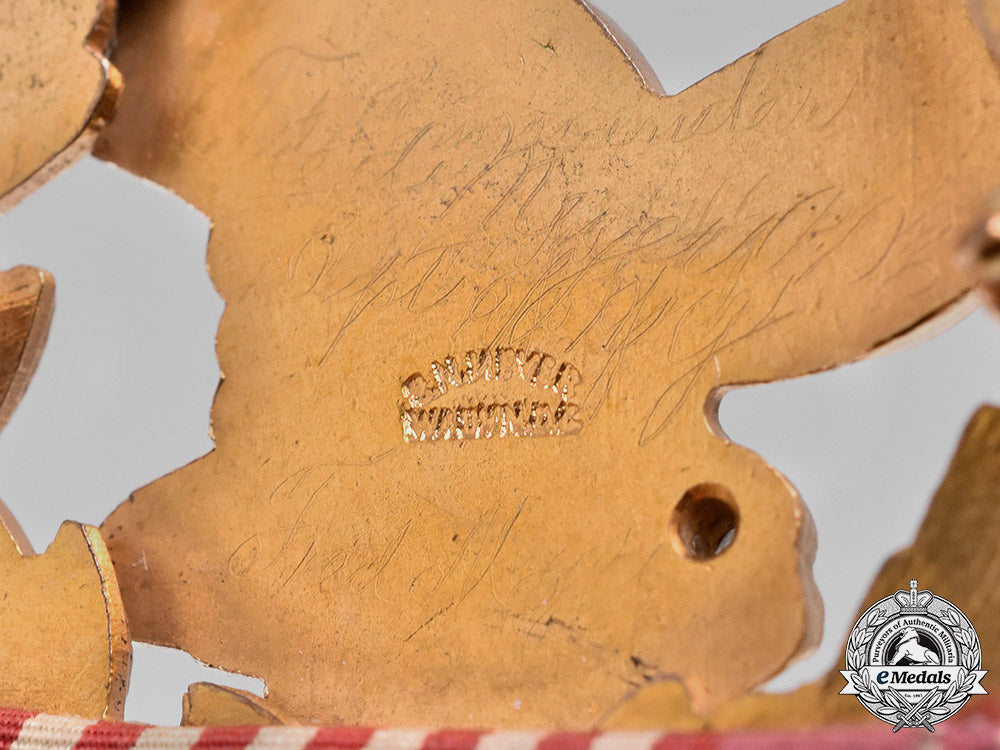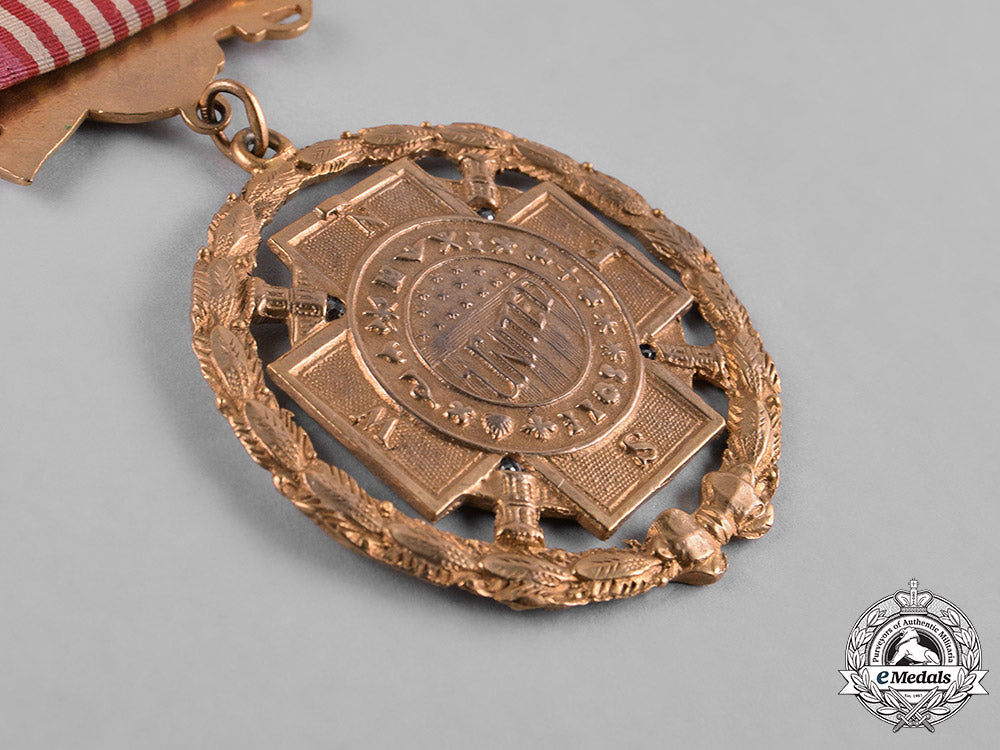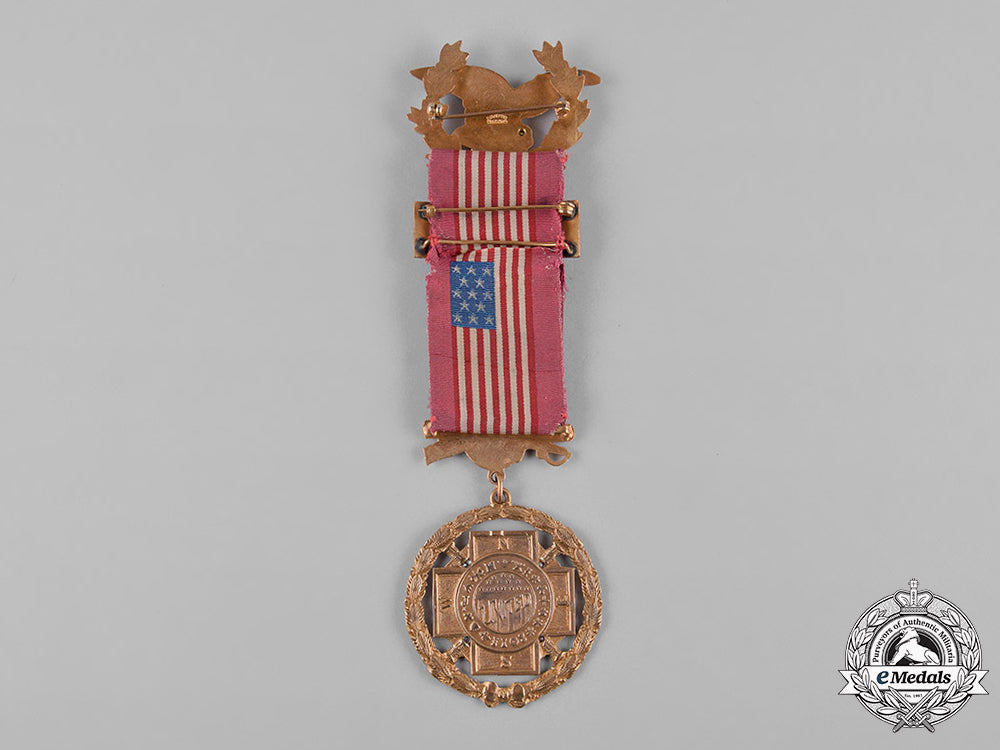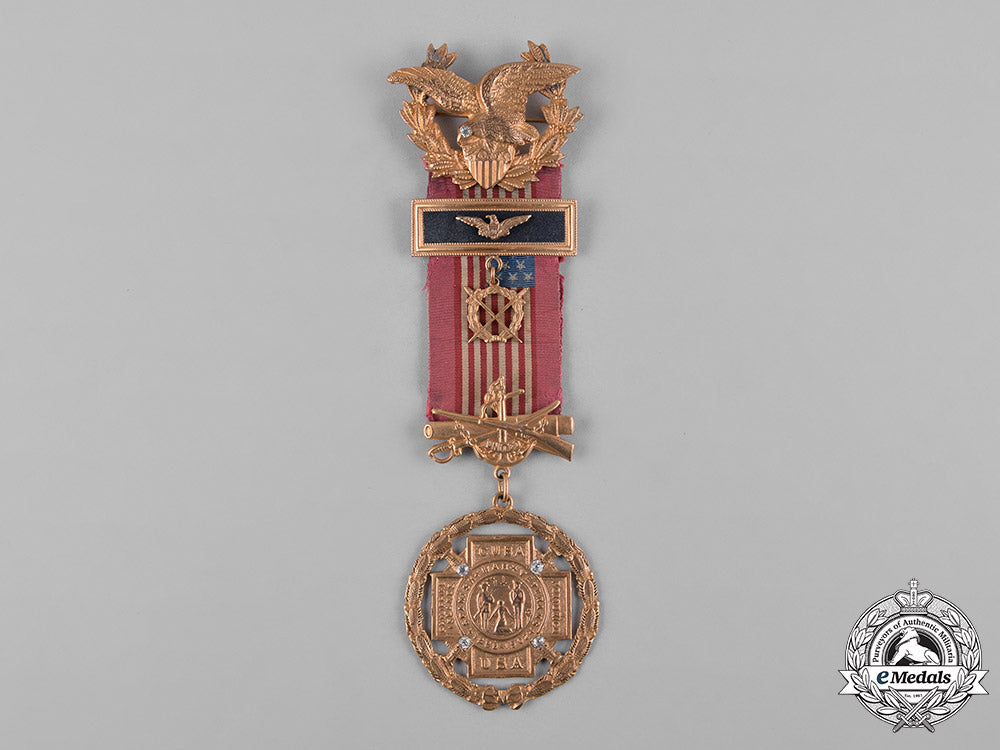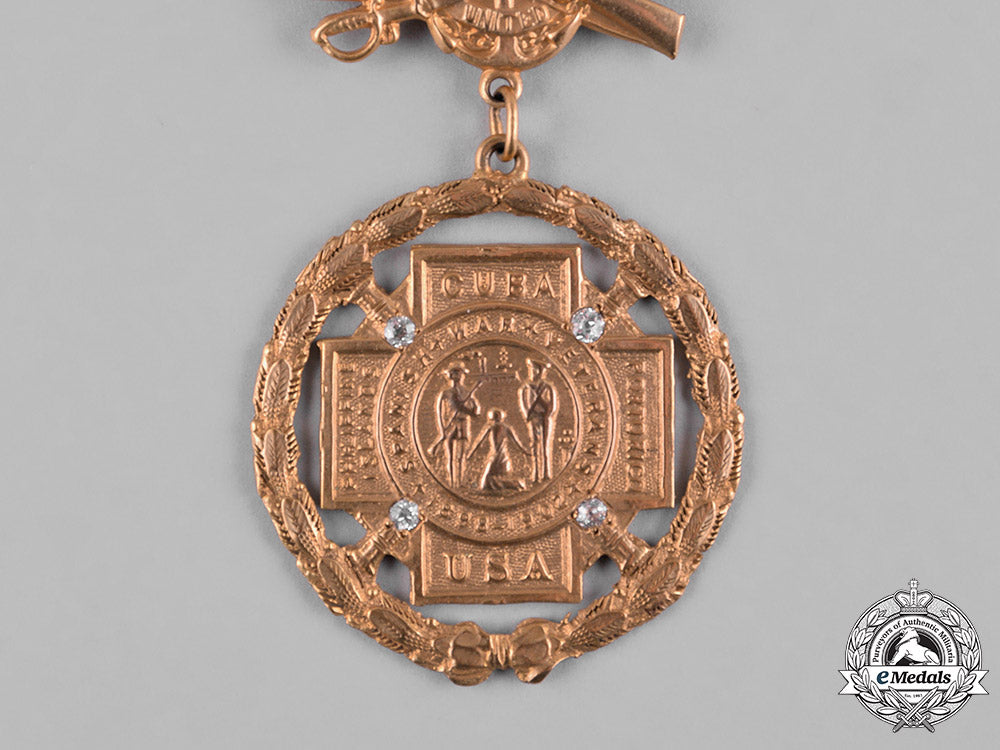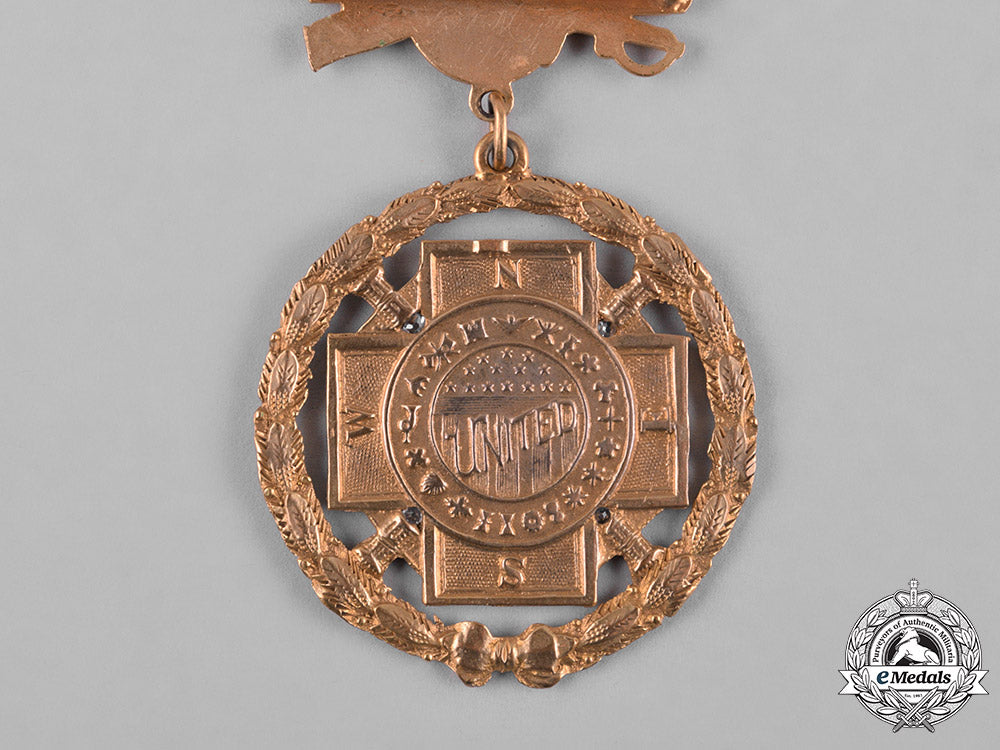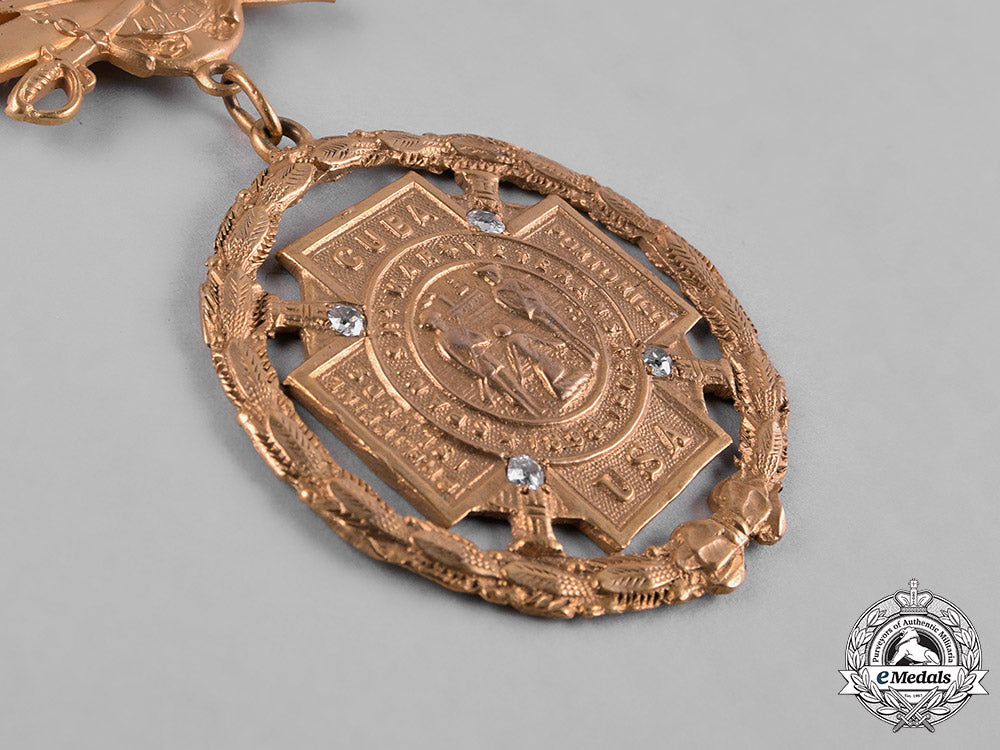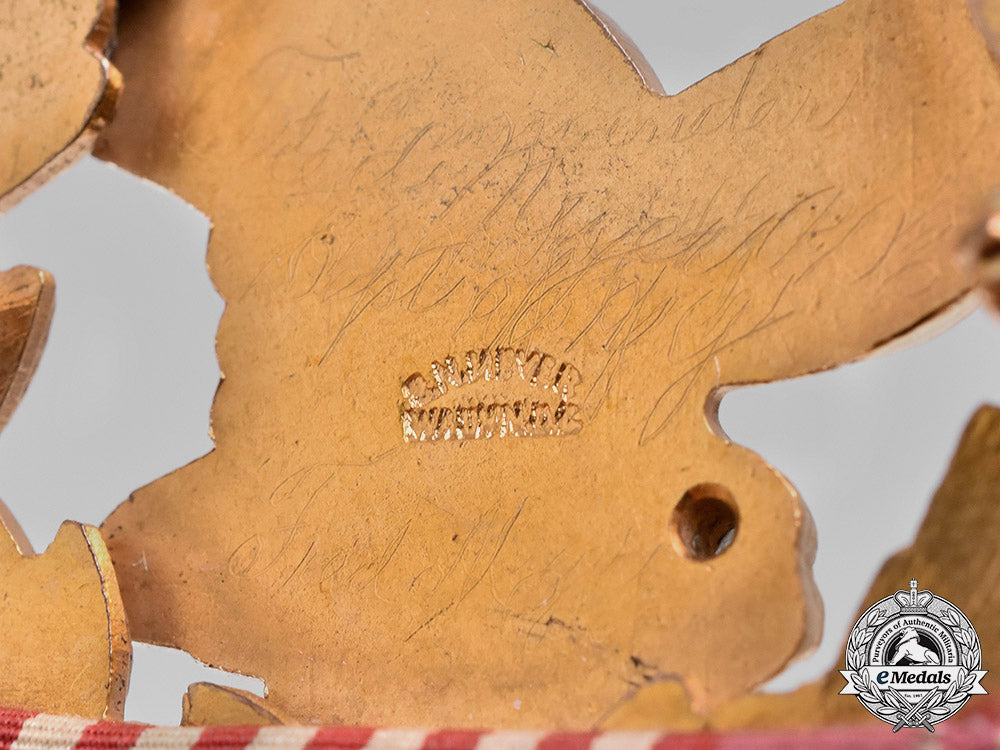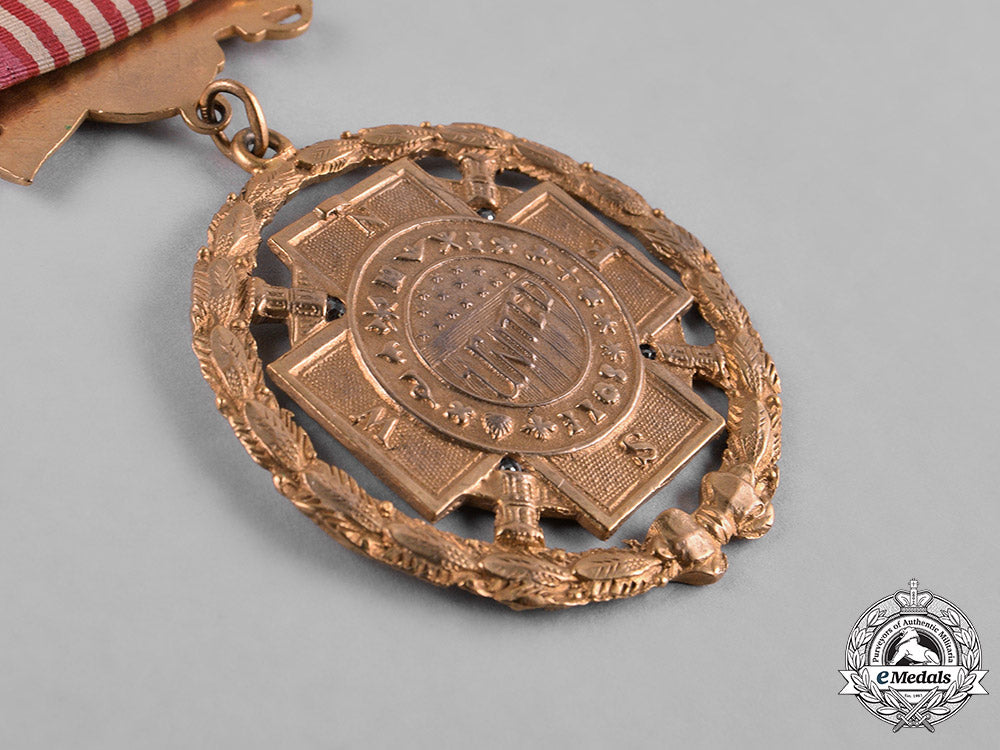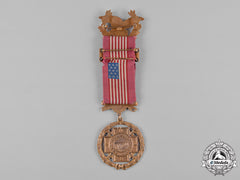
LOADING ...
In response to evolving domestic opinion, eMedals Inc has made the conscious decision to remove the presentation of German Third Reich historical artifacts from our online catalogue. For three decades, eMedals Inc has made an effort to preserve history in all its forms. As historians and researchers, we have managed sensitive articles and materials with the greatest of care and respect for their past and present social context. We acknowledge the growing sentiments put forth by the Canadian public and have taken proactive actions to address this opinion.
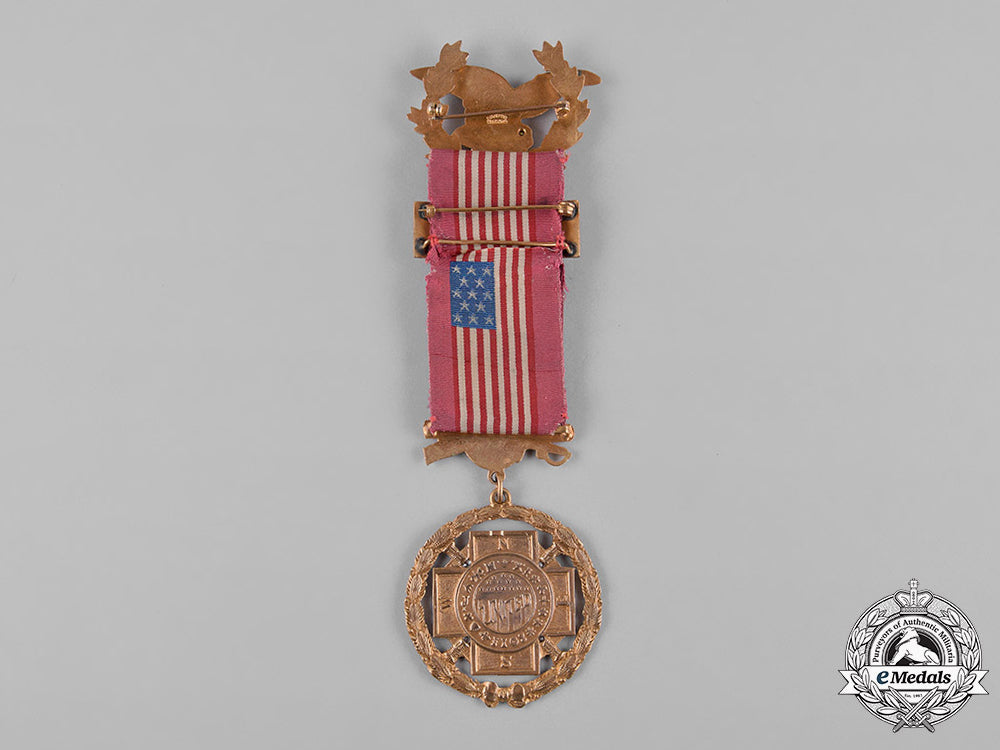
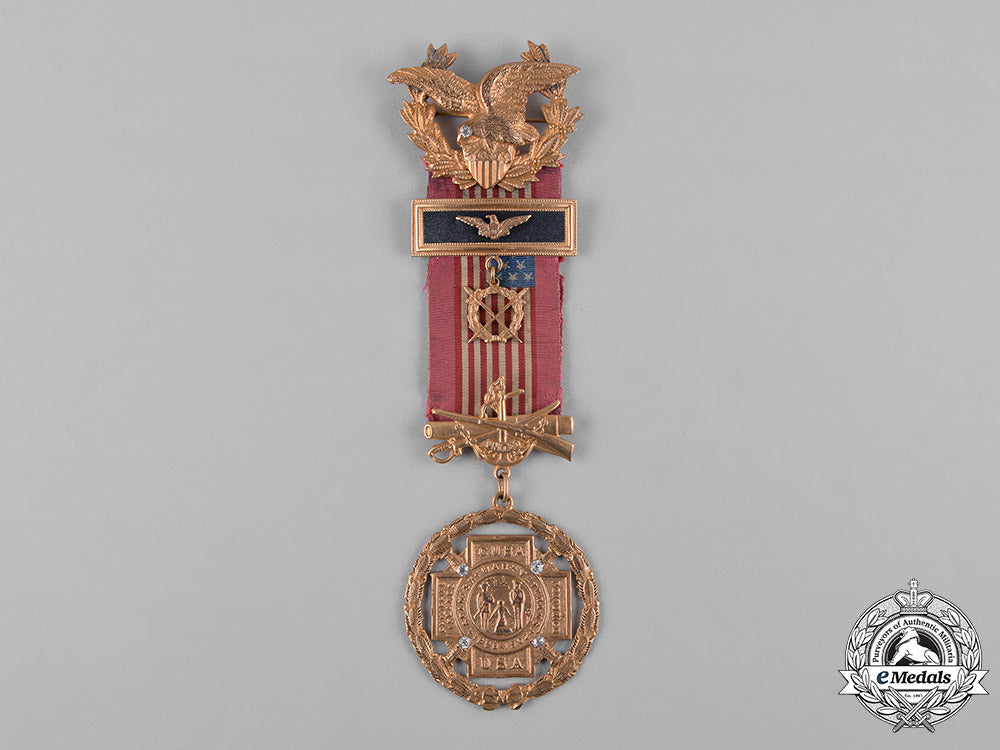
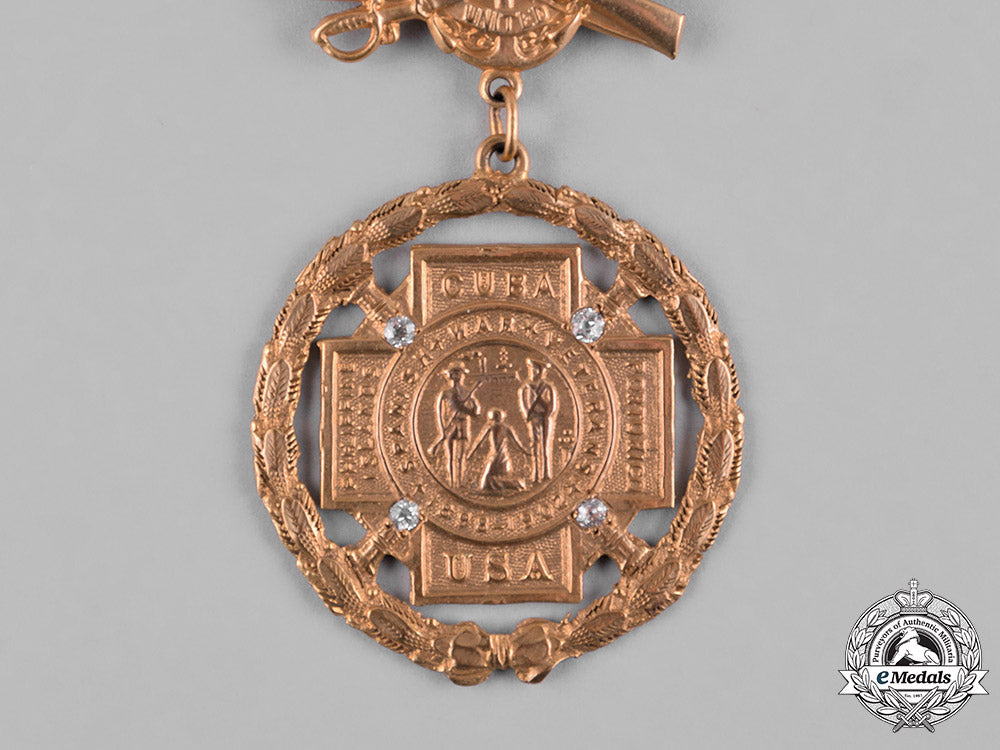

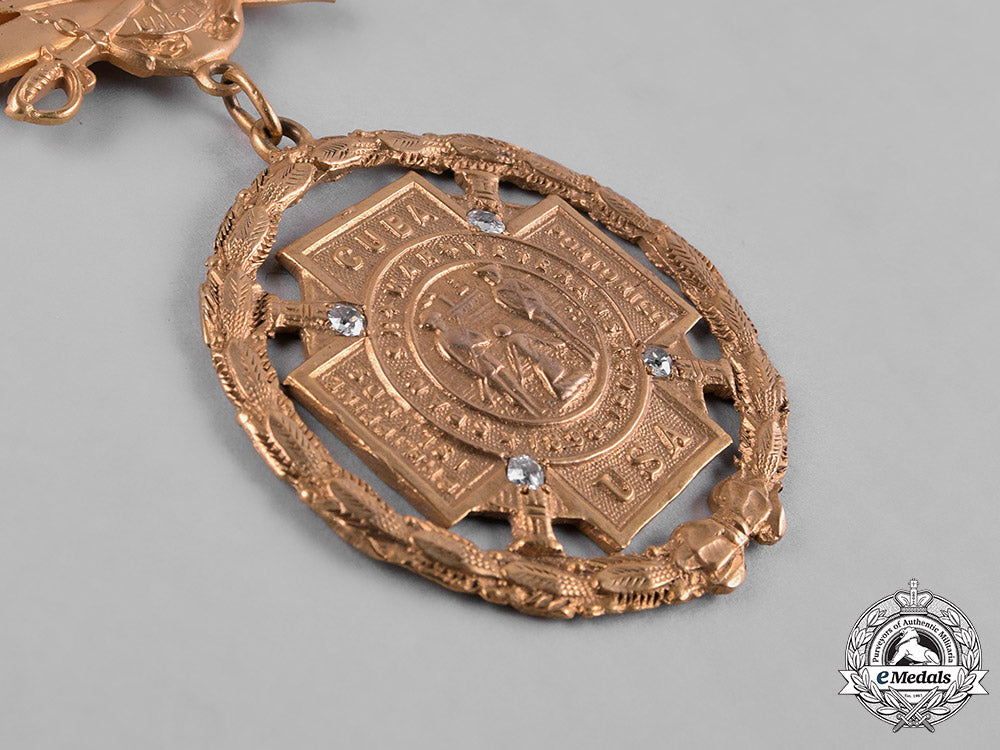

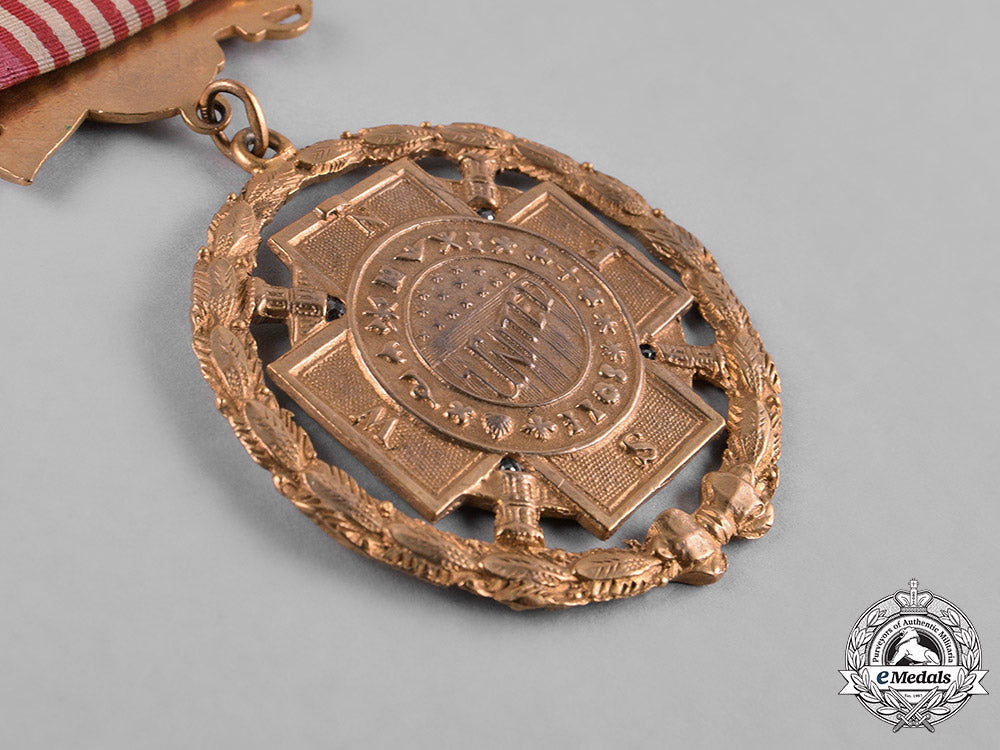
United States. A United Spanish War Veterans Past Camp Commander's Jewel, By Meyer
United States. A United Spanish War Veterans Past Camp Commander's Jewel, By Meyer
SKU: ITEM: M0303-103
Current Bid:
Your Max Bid:
Bid History:
Time Remaining:
Couldn't load pickup availability
Shipping Details
Shipping Details
eMedals offers rapid domestic and international shipping. Orders received prior to 12:00pm (EST) will be shipped on the same business day.* Orders placed on Canadian Federal holidays will be dispatched the subsequent business day. Courier tracking numbers are provided for all shipments. All items purchased from eMedals can be returned for a full monetary refund or merchandise credit, providing the criteria presented in our Terms & Conditions are met. *Please note that the addition of a COA may impact dispatch time.
Shipping Details
eMedals offers rapid domestic and international shipping. Orders received prior to 12:00pm (EST) will be shipped on the same business day.* Orders placed on Canadian Federal holidays will be dispatched the subsequent business day. Courier tracking numbers are provided for all shipments. All items purchased from eMedals can be returned for a full monetary refund or merchandise credit, providing the criteria presented in our Terms & Conditions are met. *Please note that the addition of a COA may impact dispatch time.
Description
Description
In bronze gilt, Spanish-style castles in the corners of the cross, each castle with an embedded glass stone indicating a past camp commander, the laurel wreath surrounding the membership cross signifying past command, measuring 46.3 mm (w) x 51.5 mm (h) inclusive of its integral ring, bronze gilt cannon/sword/anchor/rifle with "United" suspension, Colonel's rank insignia clasp on the American flag ribbon, the flag flanked by red edges, the Colonel's rank insignia clasp with a bronze gilt Department Graves Registration Officer wreath suspended from it, eagle over shield and open-ended wreath pinback hanger, the eagle with a glass stone representing its eye, the hanger with numerous handwritten inscriptions and maker marked "S.N. MEYER, WASH'N, D.C." on its reverse, extremely fine.
Footnote: The United Spanish War Veterans was an American veterans organization which consisted of veterans of the Spanish-American War, the Philippine-American War and the China Relief Expedition. Soon after the Spanish-American War ended, in early 1899, discharged veterans formed fraternal societies to keep in touch with their former comrades. These included the Spanish War Veterans, the Spanish-American War Veterans, the Servicemen of the Spanish War, American Veterans of Foreign Service, the Army of the Philippines, the Veteran Army of the Philippines, the Legion of Spanish War Veterans and other smaller organizations. At the start of the 20th Century, these groups began to merge. In 1904, the three largest groups, the Spanish War Veterans, the Spanish-American War Veterans and the Servicemen of the Spanish War joined to form the United Spanish War Veterans. They became the largest and most influential of the Spanish-American War societies. In 1906, the Legion of Spanish War Veterans would merge with the United Spanish War Veterans. The Legion existed in Rhode Island, Massachusetts and New Hampshire. In 1908, the Veteran Army of the Philippines, composed of soldiers, sailors and Marines who had served in the Philippine Islands, also merged with the United Spanish War Veterans. The membership of United Spanish War Veterans thus consisted of veterans of three distinct wars: the Spanish-American War (April 1898 to February 1899, the fighting having ended by July 1898, but the Treaty of Peace was not signed until February 6, 1899), the Philippine-American War (February 1899 to July 1902, a conflict with Filipinos who refused to accept the annexation of the islands by the United States, President Theodore Roosevelt declaring the conflict at an end on July 4, 1902, though violence by Moro tribesmen continued until 1913) and the Chinese Relief Expedition (1900 to 1901, commonly referred to as "The Boxer Rebellion," the veterans who had served in it were placed with the Spanish War and Philippine Insurrection veterans on the federal government pension bills, The “Boxer Rebellion” veterans accepted into the USWV in the early 1920s). The United Spanish War Veterans existed until 1992, when the last member, Nathan E. Cook, died one month before his 107th birthday at the Carl T. Hayden VA Medical Center in Phoenix, Arizona. He is often incorrectly called the last surviving veteran of the Spanish-American War. In fact, Cook was a veteran of the Philippine-American War of 1899-1902. He enlisted in the United States Navy in 1901 at the age of sixteen.
Description
In bronze gilt, Spanish-style castles in the corners of the cross, each castle with an embedded glass stone indicating a past camp commander, the laurel wreath surrounding the membership cross signifying past command, measuring 46.3 mm (w) x 51.5 mm (h) inclusive of its integral ring, bronze gilt cannon/sword/anchor/rifle with "United" suspension, Colonel's rank insignia clasp on the American flag ribbon, the flag flanked by red edges, the Colonel's rank insignia clasp with a bronze gilt Department Graves Registration Officer wreath suspended from it, eagle over shield and open-ended wreath pinback hanger, the eagle with a glass stone representing its eye, the hanger with numerous handwritten inscriptions and maker marked "S.N. MEYER, WASH'N, D.C." on its reverse, extremely fine.
Footnote: The United Spanish War Veterans was an American veterans organization which consisted of veterans of the Spanish-American War, the Philippine-American War and the China Relief Expedition. Soon after the Spanish-American War ended, in early 1899, discharged veterans formed fraternal societies to keep in touch with their former comrades. These included the Spanish War Veterans, the Spanish-American War Veterans, the Servicemen of the Spanish War, American Veterans of Foreign Service, the Army of the Philippines, the Veteran Army of the Philippines, the Legion of Spanish War Veterans and other smaller organizations. At the start of the 20th Century, these groups began to merge. In 1904, the three largest groups, the Spanish War Veterans, the Spanish-American War Veterans and the Servicemen of the Spanish War joined to form the United Spanish War Veterans. They became the largest and most influential of the Spanish-American War societies. In 1906, the Legion of Spanish War Veterans would merge with the United Spanish War Veterans. The Legion existed in Rhode Island, Massachusetts and New Hampshire. In 1908, the Veteran Army of the Philippines, composed of soldiers, sailors and Marines who had served in the Philippine Islands, also merged with the United Spanish War Veterans. The membership of United Spanish War Veterans thus consisted of veterans of three distinct wars: the Spanish-American War (April 1898 to February 1899, the fighting having ended by July 1898, but the Treaty of Peace was not signed until February 6, 1899), the Philippine-American War (February 1899 to July 1902, a conflict with Filipinos who refused to accept the annexation of the islands by the United States, President Theodore Roosevelt declaring the conflict at an end on July 4, 1902, though violence by Moro tribesmen continued until 1913) and the Chinese Relief Expedition (1900 to 1901, commonly referred to as "The Boxer Rebellion," the veterans who had served in it were placed with the Spanish War and Philippine Insurrection veterans on the federal government pension bills, The “Boxer Rebellion” veterans accepted into the USWV in the early 1920s). The United Spanish War Veterans existed until 1992, when the last member, Nathan E. Cook, died one month before his 107th birthday at the Carl T. Hayden VA Medical Center in Phoenix, Arizona. He is often incorrectly called the last surviving veteran of the Spanish-American War. In fact, Cook was a veteran of the Philippine-American War of 1899-1902. He enlisted in the United States Navy in 1901 at the age of sixteen.
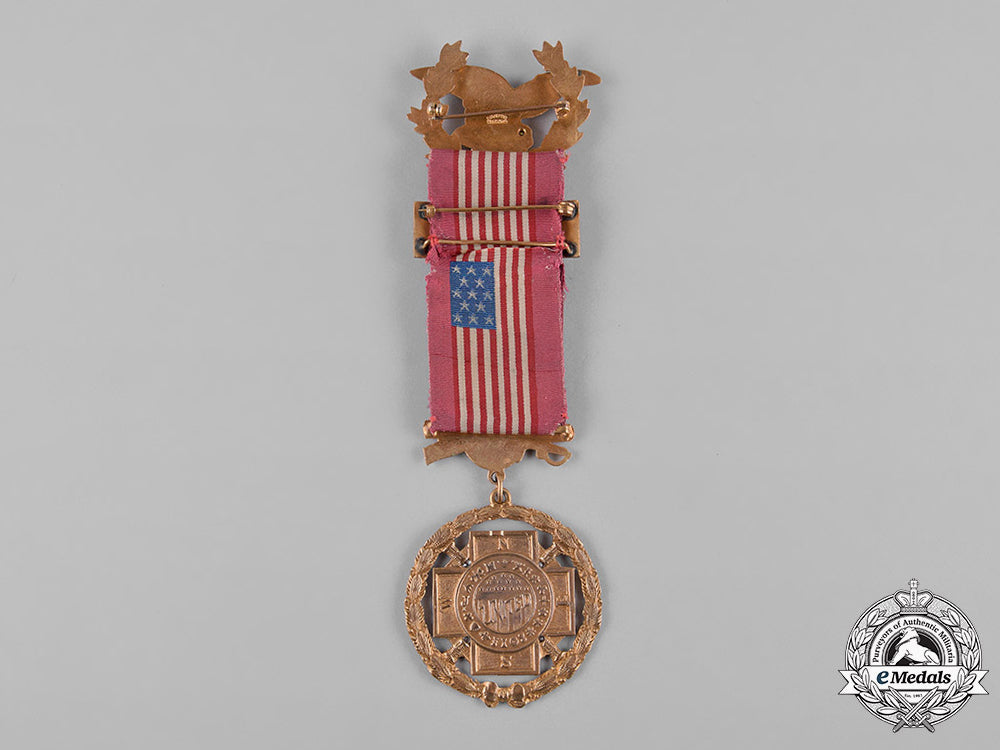
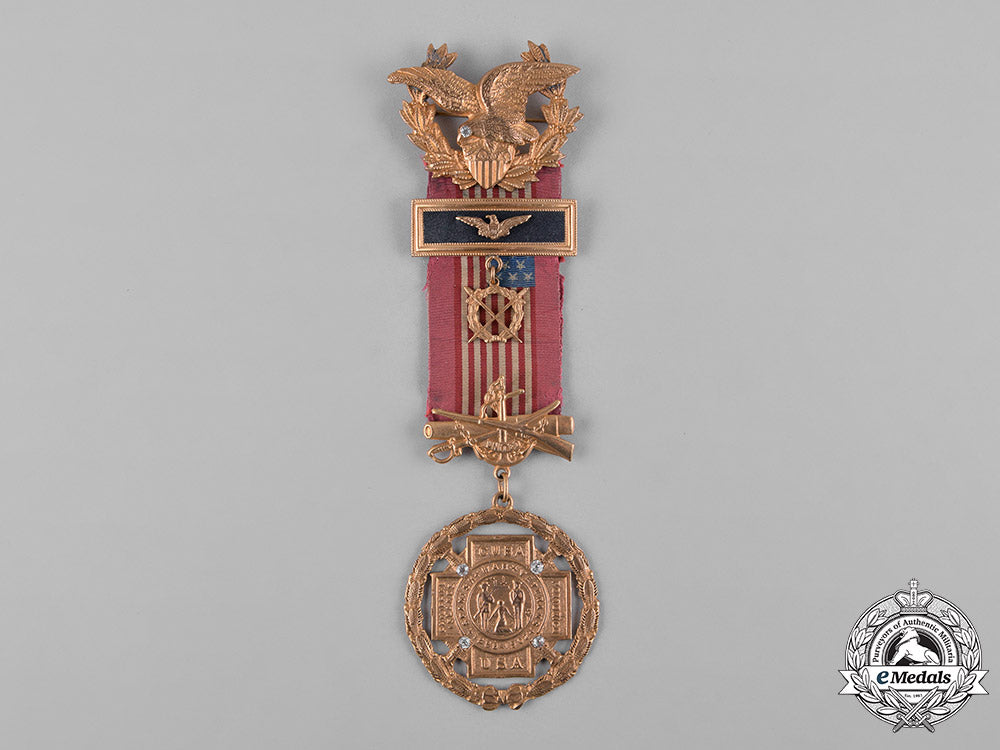

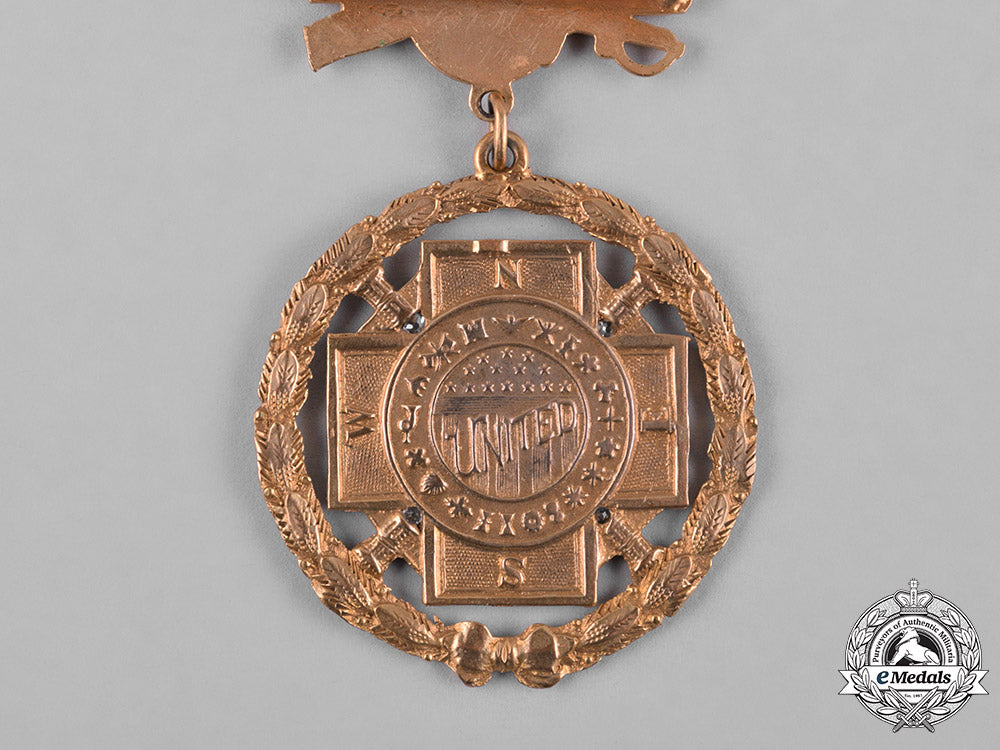
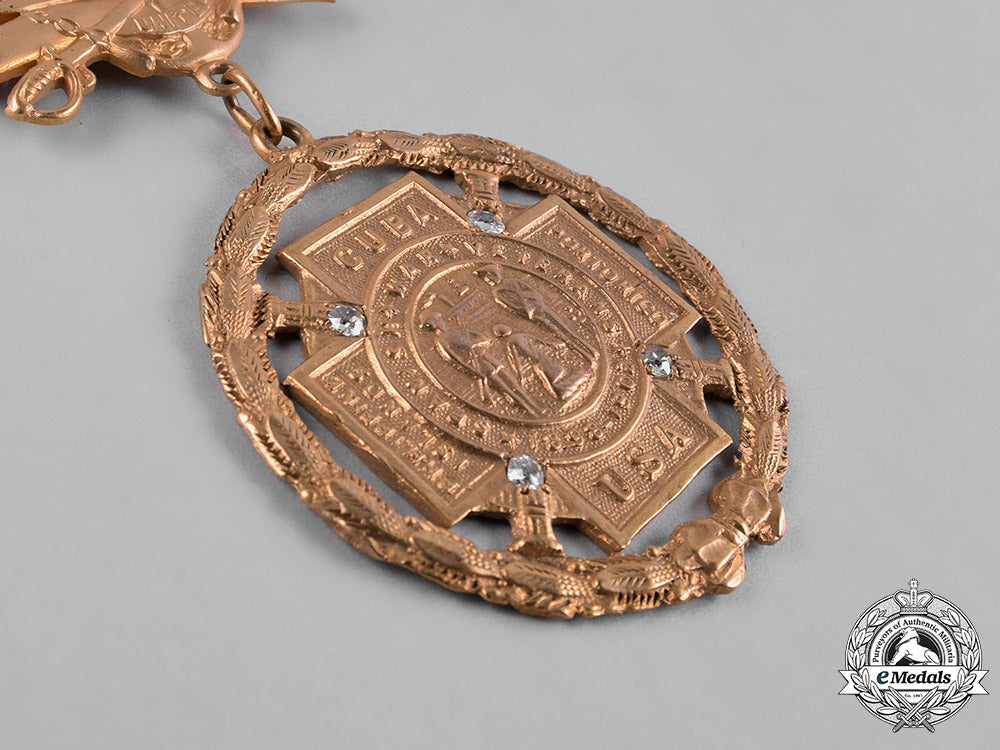

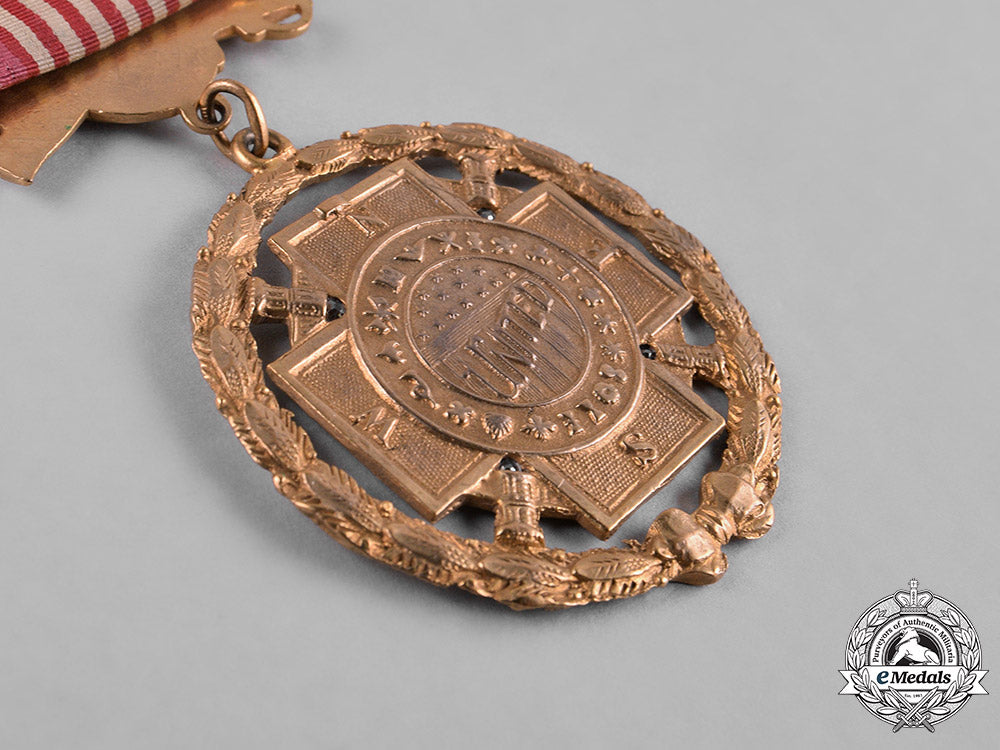
You May Also Like
Spain, Spanish State. A Medal of the Russian Campaign, with Case, by Diez y Campañia
EU24085
Austria-Hungary, Empire. A Rare Sturmbataillon 106 Personnel Badge
EU24086
France, Free Country Of Burgundy. An Order Of Saint George Of Burgundy, Embroidered Breast Star, C. 1925
EU19677
Russia, Imperial. A Russo-Japanese War Period Group Photograph, c. 1904–1910
EU23370
Finland, Republic. An Order Of The Cross Of Liberty, IV Class 1941, Military Division
EU24024
-
Spain, Spanish State. A Medal of the Russian Campaign, with Case, by Diez y Campañia
EU24085
Add to CartRegular price $340 USDRegular price $0 USD Sale price $340 USDUnit price / per -
Austria-Hungary, Empire. A Rare Sturmbataillon 106 Personnel Badge
EU24086
Add to CartRegular price $675 USDRegular price $0 USD Sale price $675 USDUnit price / per -
France, Free Country Of Burgundy. An Order Of Saint George Of Burgundy, Embroidered Breast Star, C. 1925
EU19677
Add to CartRegular price $330 USDRegular price $0 USD Sale price $330 USDUnit price / per -
Russia, Imperial. A Russo-Japanese War Period Group Photograph, c. 1904–1910
EU23370
Add to CartRegular price $340 USDRegular price $0 USD Sale price $340 USDUnit price / per -
Finland, Republic. An Order Of The Cross Of Liberty, IV Class 1941, Military Division
EU24024
Add to CartRegular price $200 USDRegular price $0 USD Sale price $200 USDUnit price / per
Do you have a similar item you are interested in selling?
Please complete the form and our client care representatives will contact you.
Sell Item